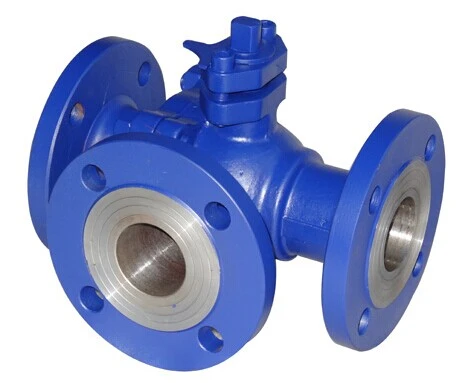The followings are the reasons causing defects on castings of valve.
1. Pore
Pores are formed by gas which cannot escape and remained in metal. The internal wall of pore is smooth and contains gas, which has higher reflectivity. Pores show spherality or ellipsoid basically (spot defect), having influence on amplitude of reflected wave. Pores in steel ingot is pressed into area defects after being forged or rolled, advantageous for being detected by ultrasonic wave.
2. Shrinkage cavity and loosen
The volume shrinks when castings or steel ingot are cooling and solidifying. The finally solidified parts form hollow defects when they are not supplemented by liquid metal. Large centralized hollows are called as shrinkage cavity. Small dispersive gasp is called as loosen. They are usually located in the finally solidified parts in the center of castings and steel ingot, having rough inner wall and accompanying with a number of impurities and tiny pores. Due to contraction principle, shrinkage cavity must exist, having different forms, dimensions and locations due to various processing technologies. Shrinkage cavity becomes defects, when it expands to castings of steel ingot. If shrinkage cavity is not cut off cleanly, it will brought into forgings and become residual holes during blooming and forging of steel ingot.
3. Slag inclusion
Slag or refractory materials on body of smelter fall into liquid metals during smelting. Slag is rolled into castings or steel ingot during pouring, forming slag inclusion. In general, slag inclusion does not exist solely. It usually shows dense status or disperses in different depths. It is like volume defects while also has definite radius.
4. Inclusion
During smelting, resultants of reaction (such as oxides and sulfides), nonmetal inclusions or additives of some metal ingredients are not melted completely, remained and form metal inclusions, such as tungsten and molybdenum having high density and melting point.
5. Segregation
Segregation of castings or steel ingot mainly refers to the composition segregation formed by maldistribution of composition during smelting or melting. Mechanical properties in region where segregation exits in are different from mechanical properties of the whole metallic matrix. When difference exceeds than allowed range, segregation becomes defect.
6. Cold shut
Cold shut is a stratification defect only existing in castings, mainly related to the design of casting technology. It is a septal area defects formed by semi-solid film caused by liquid metal surface cooling which is remained in casting due to spatter, double wave, pouring interrupting or two or multi metal flows meeting from different directions.
7. Skull patch
It is a stratification defect caused by oxidation film formed by firstly poured liquid metal surface cooling rapidly in the air due to pouring interrupting and stopping when steel ingot is poured from ladle to ingot mold. The newly poured liquid metal makes oxidation film break into steel ingot. Skull patch cannot be eliminated in following blooming and forging.
8. Aeolotropy
During castings or steel ingot cooling and solidifying, cooling rates are different from surface to center, forming different crystal structure, showing aeolotropy of mechanical property. It also results in aeolotropy of acoustic performances, having difference sound velocities and sound attenuation from center to surface. The existence of aeolotropy has bad influence on evaluating dimension and location of defects when using ultrasonic wave for detection.
